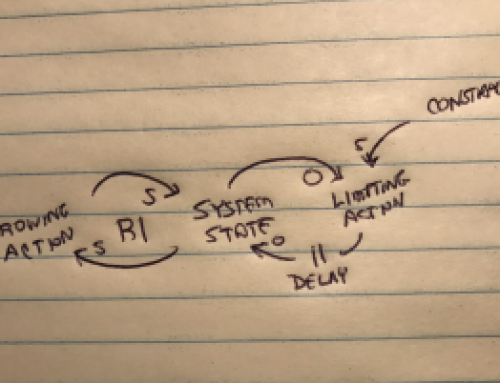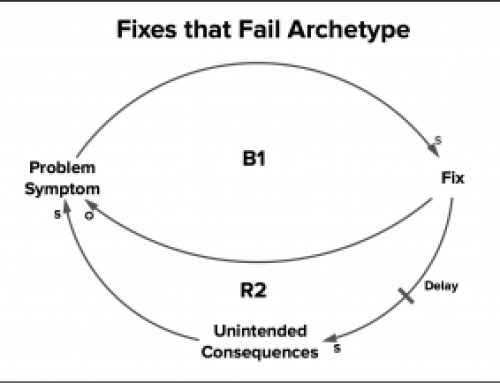What are the priorities in your organization? Please note that I am going to use the word “priorities” in this article because I frequently hear executives talk about their “top priorities” for the organization. While I am using that term, I am writing about the broader concept of the strategic objectives or goals that are truly guiding an organization at any one time and then condensed into an executive’s “top priorities.”
Are there a few top priorities that are communicated clearly and the whole organization is focused on those priorities? Do those priorities matter to you as an employee? Does it seem that everything is a priority? Are priorities never discussed and yet, everyone is frantically chasing many things at once? Do all the priorities seem to focus only on “them” and not “us”? Is there a “us and “them” in your organization?
PRIME organizations should have priorities that any leader or any member of the organization can state succinctly on a short elevator ride and that truly embody the intentions of the entire organization to achieve a new future state that creates new opportunities and growth for their organization.
In earlier blog posts, I introduced you to the Corporate Lifecycle model as it relates to organizational aging (see Related Posts inset). When you consider the stages of the corporate life cycle model and the natural and predictable tendencies relating to immature, but growing organizations, PRIME organizations, and aging organizations, the presence, nature, and focus on priorities in each stage is indeed quite predictable. I believe that examining your priorities is another way you can quickly diagnose where you are in the corporate lifecycle model and reveals a great deal about the way you manage your organization. The key is recognizing where your organization is in terms of your own lifecycle stage and your own relationship to priorities and how you can adjust to get back to a PRIME state in terms of those priorities.
The Corporate Life Cycle Model – An Effective, Indispensible Framework to Shape Leadership Thinking
What is the Corporate Life Cycle Model
The Perfect Leaders in the Life of a Corporation
Why Should You Assess Your Organization’s Life Cycle Stage?
Diagnosing Problems of the “Go-Go” Organization Life Cycle
A Newborn’s Singular Quest for Growth and Survival
When a company is born, there is a singular commitment to the overarching priority of building enough business to survive. Everyone (which may only be a few people or many) is normally very aware of the few focused priorities that are propelling the business. These priorities have been communicated clearly and generally everyone involves has a significant personal attachment to those priorities both for the company’s well-being and their own well-being. To sum up, I would say that newly formed companies generally have priorities that are:
- Few
- Focused
- Visible
- Impactful to both employees and company (sometimes one and the same)
A significant driving force behind these priorities can be heard in conversation as everyone refers to decisions, actions, and priorities within the context of the word “we.” Newly formed companies generally begin with a contagious, cohesive, cooperative, and enthusiastic spirit of “we.”
Adolescence and Go-Go Stages Sprout Priorities like Weeds
As companies find some initial success and momentum, excitement continues to build, new production (sellers and doers) are hired, and new ideas abound in an environment that, like a typical teenager, feels a sense of invincibility. With these stages comes is a predictable tendency towards complete anarchy when it comes to priorities. The “we” is expanding with new leaders emerging, and opportunity is everywhere. This can easily lead to everyone chasing everything at the same time, multiple priorities, and an indiscriminate view of any true “priority” among the priorities so to speak. In fact, the way I am stating it sounds the same way it feels to be in that type of organization. It’s messy and nearly indecipherable!
What do priorities in this environment look like?
- Many (too many)
- Unfocused and harder to articulate clearly
- Impactful to business and employees (the “we”)
- Growing number of high risk priorities, under-invested priorities, and possible negative impact (creating too many costs, under-investments, stretching thin) priorities
Organizations that stay in the adolescence or “go-go” stages of growth chaos for a long period of time risk losing good people due to the disorganization, lose true long-term growth potential because of ineffective attention to the goals and priorities that really matter (being minimally good at many things but not great at a few), and possible implosion due to lack of capital and resources given how many priorities go unchecked and yet chased. If your priorities seem endless because of what you believe is endless opportunity, and you can’t seem to find focus on a few that can really leverage your business, this may be a sign that you are in one of these stages and need to start refining your priorities.
Aging Company Priorities Reflect Protective and Defensive Management
On the other hand, companies that have tipped past the PRIME stage (we’ll skip PRIME for right now) and are starting to experience corporate aging have a completely different problem with priorities. As you recall from my earlier writings on the topic of the Corporate LifeCycle, corporate aging starts occurring as the administrative and integration functions become overly dominant and actually squelch entrepreneurial activities and true production. An organization simply becomes too institutional and over-manages. So what is the effect on priorities? What are the characteristics of priorities in an “aging” corporation?
- There are usually a few, but constantly changing priorities
- Focused on specific results that are usually focused on growing current business, cutting costs, or protective of current positions
- Clearly are Impactful on company – bottom line or margin improvement, growing revenues in existing products/business lines, earnings for investors, top management success, survival (but different that the infant’s excitement to survive through growth)
- Less impactful on employees, at least in a positive way – benefit of chasing priorities usually communicated as “avoiding bad things” and “keeping jobs” rather than engaging entire organization for a new future.
- These priorities usually accentuate the “us” vs. “them” culture that grows in aging companies.
The point is that aging companies have a tendency to create priorities from a positions of managing decline, fear, competitive positioning, or those focused on protecting profit margin. The administrators and integrators want to manage the situation. The entrepreneurs feel stifled in terms of investment in new ideas or new markets and leave. The best producers who are now facing ever tightening belts in terms of expenses and commissions start looking for that next “wild-west” company that will welcome them as heroes. A self-fulfilling prophesy starts to emerge as a cycle of aging and more aging and the youthful and growing “we” is replaced by the uncaring “them.”
For PRIME Companies – Few and Focused Priorities
If those are characteristics of priorities in the early growth and growth stages as well as aging stages, what do priorities look like in the PRIME (or late PRIME) states? What are the signs of healthy priorities? PRIME organizations have some common characteristics in terms of their priorities and they look like this:
- Senior Leadership (esp. CEO/President) can tell you their organization’s priorities in thirty seconds.
- The priorities are few, but clear.
- The priorities paint a picture of what the organization success will look like in the future..
- Those priorities also clearly reflect the interests of the whole organization.
- There are only a few priorities and everyone in the organization knows what they are at all times and why they are important to the future of the organization.
- Every decision made reflects the commitment to those priorities and all managers are well versed on making decisions that tie to those priorities.
- The few priorities are all focused on creating a new future state, or focused on supporting the move towards and supporting that future state.
- Anyone in the company that repeats those priorities uses the word “we” enthusiastically.
I had the opportunity to work for a CEO that knew the value of leading the organization to pursue only a few key priorities that clearly painted a picture of a valuable future for everyone in the organization. These were not easy priorities (goals, objectives) to pursue, and there were sacrifices that had to be made to achieve them, but these were clear priorities that everyone knew, that were repeated often, that were reinforced by management behavior, and were supported by the entire organization. In that environment, the “we” was revived as we worked towards our common goals and the organization did indeed create a new future based on the work to achieve the goals represented by those priorities.
Getting back to PRIME Priorities
An organization’s priorities are a fundamental “tell” or reflection of their true stage in the growth-PRIME-aging lifecycle model. As you reflect on the priorities you have today in your organization, you should not only reflect for the purpose of more correctly identifying where your organization exists today on that lifecycle curve, and to further investigate other characteristics of your corresponding stage, but more importantly, to reflect on how you can reshape your priorities to move towards PRIME priorities. PRIME organizations should have priorities that any leader or any member of the organization can state succinctly on a short elevator ride and that truly embody the intentions of the entire organization to achieve a new future state that creates new opportunities and growth for their organization. Getting to that state may take a variety of forms depending on what stage you are in today. You may need to eliminate distracting priorities that have no long-term value or that actually just get in your way. You may have to overcome fears and disabling pressures of the past to find priorities that actually create a new future vs. protecting past successes or at bets offer incremental benefits. One thing for certain, I believe that you must find priorities that fully engage your organization and best represent the collective passion and work that your organization is willing to put forward to achieve a new future.


